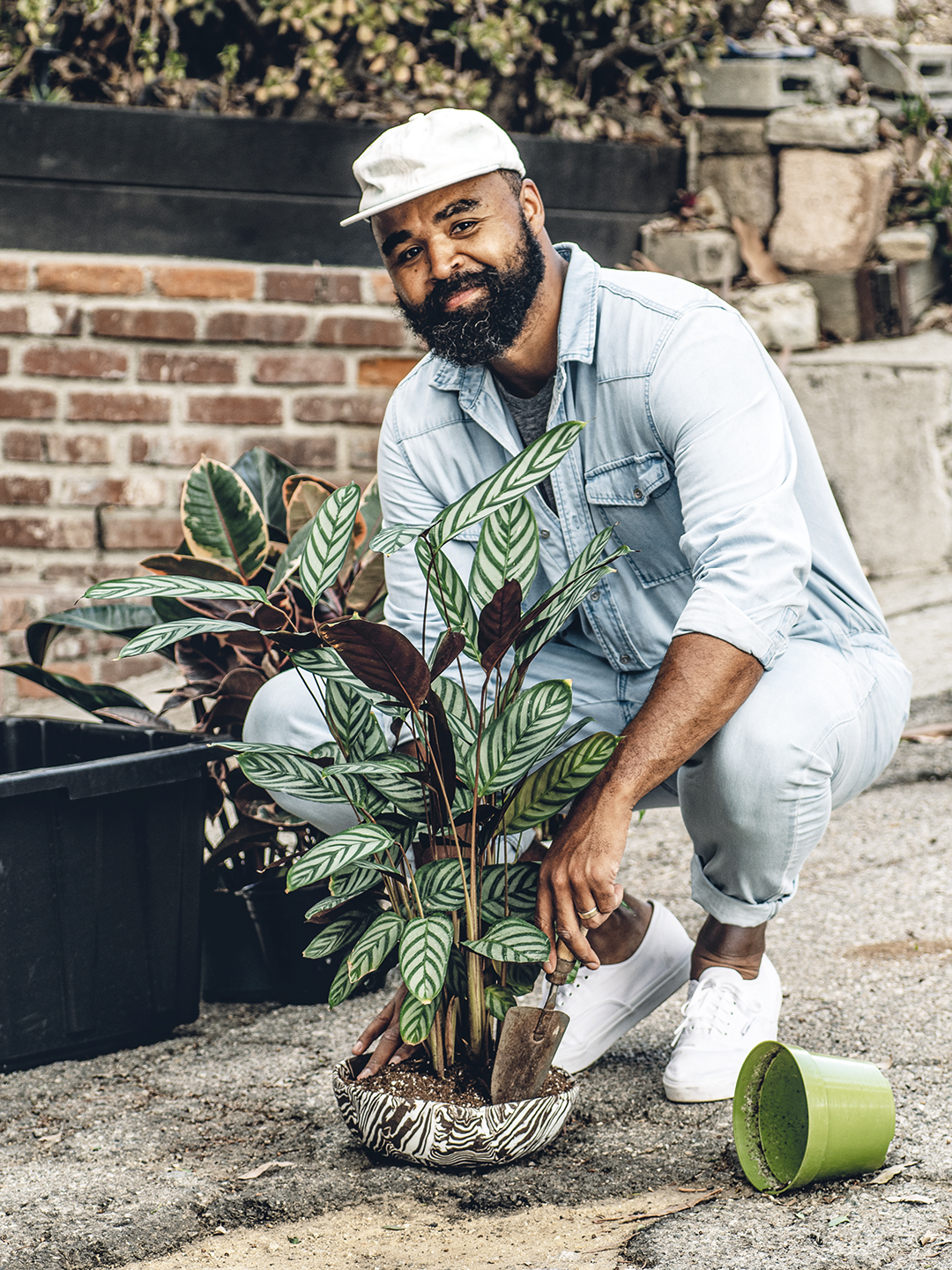We may earn revenue from the products available on this page and participate in affiliate programs.
If you’ve ever been at the mercy of a finicky orchid or fiddle-leaf fig, you already know plant parenting isn’t always easy. That’s why Hilton Carter’s first three books focused on arming newbies with a deep understanding of the basics. But his fourth title is for those ready to graduate from foundational knowledge and cultivate some flair. In Living Wild, the plant-fluencer lifts the curtain on the artistry of plant styling with a deep dive into colors, textures, and statement-making combinations. Along the way, he takes readers into eight lush homes that he styled, including his own. In this excerpt, Carter shares how a little creativity turned a pest problem into the planter of his dreams.

When I was plant styling my home and trying to find the perfect planters for every single plant, nothing could top our in-floor planter. Yes, you read that right. You see, sometimes good things can come out of bad situations. While we were renovating our home, inactive termite damage was found in the wood flooring of the living room. Not wanting the new floor there to clash with the original boards elsewhere, we decided to get new flooring for the entire downstairs of the house.

While this caused us a lot of stress, as well as lost time and money, a silver lining did appear. We were going to place a new window on the south side of the house, and I suggested we build an in-floor planter in front of it before we installed the new floor. Then we could plant a citrus tree, a calamondin (Citrus x macrocarpa), in it and have it growing out of the floor, just like in Jack and the Beanstalk. This would blur the line between indoors and out (if it hadn’t been blurred already by the 300 other plants). “But how does it drain?” you may ask. Well, we had piping connected to a drain in the base of the planter that leads outside. You could say the house became the planter, and what a perfect one it is.

Even when you don’t have a plant in mind, it’s hard not to purchase a new planter when you see one you love, just in case it works for a future project. But when I’m styling my own space, I’ll most likely choose the plant for a particular area first, then select the planter that it will be styled in. The in-floor planter was an exception to this rule.

Once I’ve figured out the light situation and decided on the type of plant, I consider the colors and textures of the pieces nearby and pick a planter that vibes well with the plant. You can choose either to mimic the texture or color of the plant or create a cool conflict between the two. For example, the smooth, leathery foliage of a rubber tree (Ficus elastica) in a fluted terracotta planter feels like a perfect combination. Or imagine a Madagascar palm (Pachypodium lamerei) in a Japanese nerikomi-style planter. The coupling of the layers of colored clay with the thorny plant would be divine.
From Living Wild: How to Plant Style Your Home & Cultivate Happiness by Hilton Carter, CICO Books. Photographs: Hilton Carter © CICO Books.









